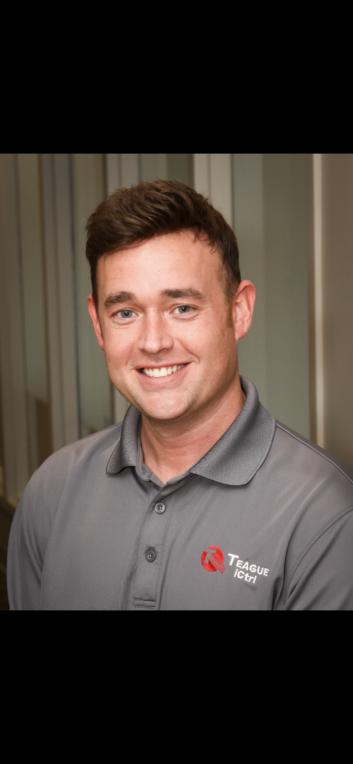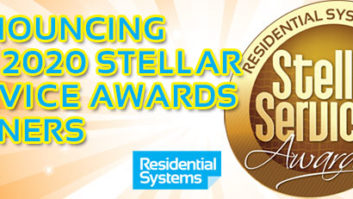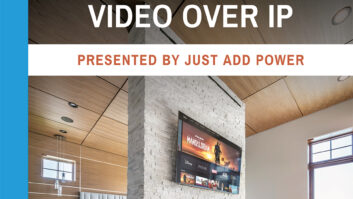
AV can be a demanding industry. Just ask your networks.
Networking has become the most important part of any project, says Matt Millstein, president, California-based M2 Multimedia Inc. “Not only are the clients dependent on their mobile devices and computers, but everything AV and automation rides on the network,” he says. “With critical environmental controls riding on there, we now have to offer best-in-class enterprise-grade networks. At this point, everything related to AV, lighting, HVAC, CCTV, security, and access entry is riding on the network, so we have to assume that any new technology coming out will also ride on it.”

And demand is the ultimate understatement, as networking has been overlooked for years in regards to anything AV, explains Stephen Edwards, director of AV sales, Teague iCtrl. “For each device, whether it’s an AV receiver, smart TV, or, more recently, lighting and remote control, the network is the backbone of any AV system. The typical customer demand is ‘need more coverage,’ and the AV demand is ‘need a network.’”
Each device in a home AV system has network compatibility, giving the customer a nice interface for controlling that device, he adds. “As additional products and electronics are introduced, the need for a proper network becomes vital to ensure functionality,” says Edwards. “We’ve seen multiple circumstances in which a customer adds their own network-controlled device assuming the network can handle it, but they are throttling the system by utilizing their ISP-provided router. The more devices, the greater the need for better network security, increased number of subnets to handle the device count, and faster throughput on routers, switches, and access points.”
What a difference a decade makes. Once needed solely for surfing the net and email, today’s network is an indispensable part of any control/automation system, says Christopher Russell, owner, Texas-based Signature Theaters. “This makes it imperative for AV professionals to stay abreast of the latest technologies and practices,” he says. “I believe all professional AV contractors should review their install practices at least every quarter to ensure up-to-date performances of their clients’ networks.”
With the proliferation of IoT devices, demand for network connectivity has grown from just computers to include most AV, including surveillance, vehicles, garage doors, and even appliances, he notes. “I foresee this trend progressing to eventually include almost all consumer electronic devices.”
Plan A
So how do you foresee these changes and ensure that networks remain robust and able to handle demands?
“We dedicate a significant amount of time to reading bulletins, white papers, and email updates to stay on top of changes in networking standards and practices as they become available,” says Russell. “We also use our service contracts and remote access as tools to make sure we can implement these changes in real time to ensure healthy networks and happy clients.”
Unfailing, reliable service after the sale is the most valuable thing we bring to the table, he adds. “We make sure our clients understand that their new systems are going to require maintenance and that we will be there to do that maintenance. They trust and recommend us because we’ve spent years taking care of their systems, answering after-hours phone calls, and doing whatever it takes to ensure that their systems continue to perform as they should.”
About a year ago, Pakedge released an update detailing the need to put TiVo and DirecTV systems on a VLAN separate from your Control4 system. “This simple fix solved many persistent problems we were having in several systems,” says Russell. “Phone calls from these clients instantly stopped, and I was finally able to sleep at night knowing my clients were happy and their systems were working as they should. The fact that they were able to identify, solve, and notify their dealers of this fix tells me that they have a genuine interest in the real-world performance of their equipment and, ultimately, the systems they support.”
Other Resources: Integration Guide to Video Distribution
Edwards says he’s often initiated “tough” conversations with clients so they understand that the AV system designed for them is only as good as the network system in the house. “We work hard to ensure we have remote access to help with any problems a customer may have, and our brand and reputation is built on 40 years of working with home builders and commercial contractors around the greater Kansas City area.
“Utilizing BakPak has done wonders for quickly identifying problems within a system,” he adds. “Having the BakPak phone app has been a great customer satisfier as we can notify or correct a customer issue before they even know there is one. Deploying the Pakedge PDU in each project has not only increased customer satisfaction, but decreased truck rolls to the customers’ homes.”
One Teague iCtrl client, in a 16,000-square-foot house with local cable boxes in five different rooms, was having issues with TV watching. “We installed a two-port PDU behind each cable box and TV to ensure the customer didn’t have to schedule a service call, get behind the TV or rack location, or have to move to a different room just to enjoy his favorite cable program,” Edwards explains.
“In another case, our team was notified of another great client with network issues. Sales reached out to the homeowner to see if we could schedule a remote management call, as multiple devices were showing offline and not functional. The homeowner advised us that everything seemed alright, but noticed some lag in his service. After a quick maintenance of the system, and remote power cycling of essential equipment, the system was up and running. The customer had not even realized what he was missing until the fix, and is extremely happy.”
Other Resources: The Integration Guide to Outdoor AV 2019
Your Network Says Do This
Chris Smith, CEO, Cloud9 Smart, NYC, reminds us that home networks aren’t just for the kids to do homework, for your spouse to watch YouTube, or for us to to buy yet more unneeded items online.

“The network enables all of the wired and wireless communication for every subsystem to be seamless and highly reliable,” he says. “Everything in the home from lighting, shading, audio, video, climate, security, and the overarching control system relies on the network infrastructure.”
Smith’s approach to making sure it works well into the future includes using enterprise-grade equipment. “We rely on premium hardware that is highly configurable while providing fantastic reliability,” he says. “This includes routers, switches, wireless controllers, and access points. As technology evolves, we can replace components to maintain the best client experience, security, and bandwidth. Systems at this level begin at several thousand dollars and provide the platform necessary for the smart home.”
Wire everything possible, he advises: “If a device has an Ethernet port, we use it. Putting more devices on the wired side of the network not only increases reliability, it also increases the available bandwidth on the wireless side that can be used for any remaining mobile devices. And the wire itself matters. Category cable does have limitations, so utilizing Cat6 and above is now the baseline. Running fiber has now also become commonplace. Fiber allows for significantly higher bandwidth, but removes the ability to do Power over Ethernet (PoE).”
Plan to run additional wiring for access points, even if you don’t end up using them, Smith adds. “Better to have it and not need it than the other way around,” he says. “Our service standard is based on remote management capabilities that are native to the products we install. The systems have the ability to report back to our office and we can remedy issues before a client ever experiences a disruption.”
The bottom line, Millstein concludes, is that overall, networking is the most important element of the home today. “All of the technology relies on it as well as the customer’s personal devices, so clients should be made aware of how important this is and how critically their lifestyle relies on this technology.”







